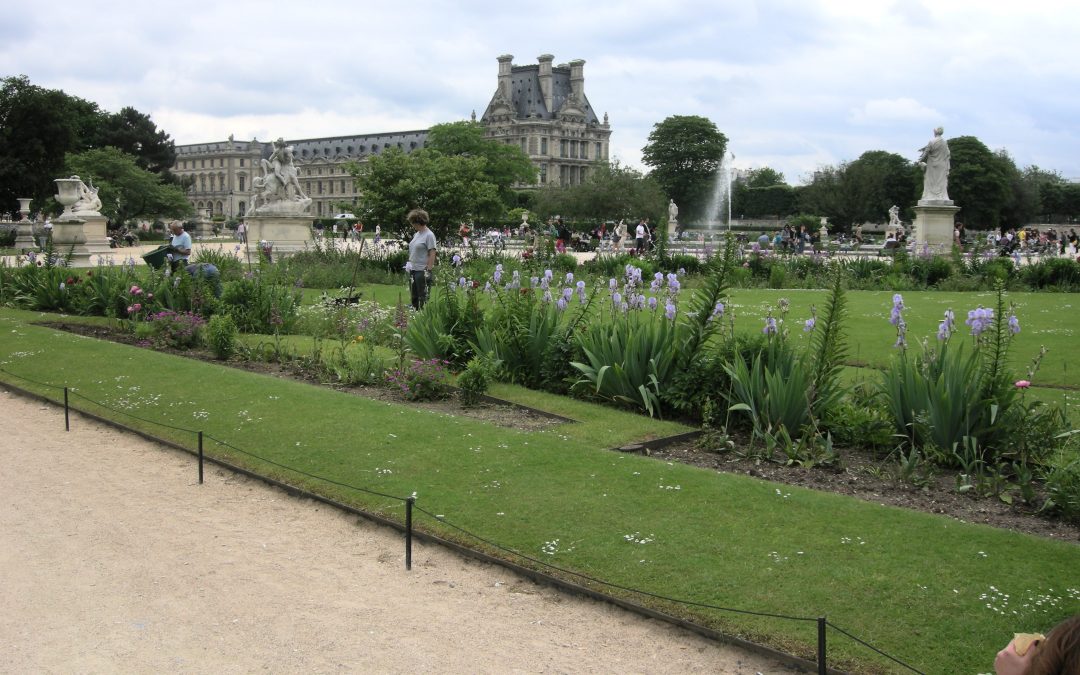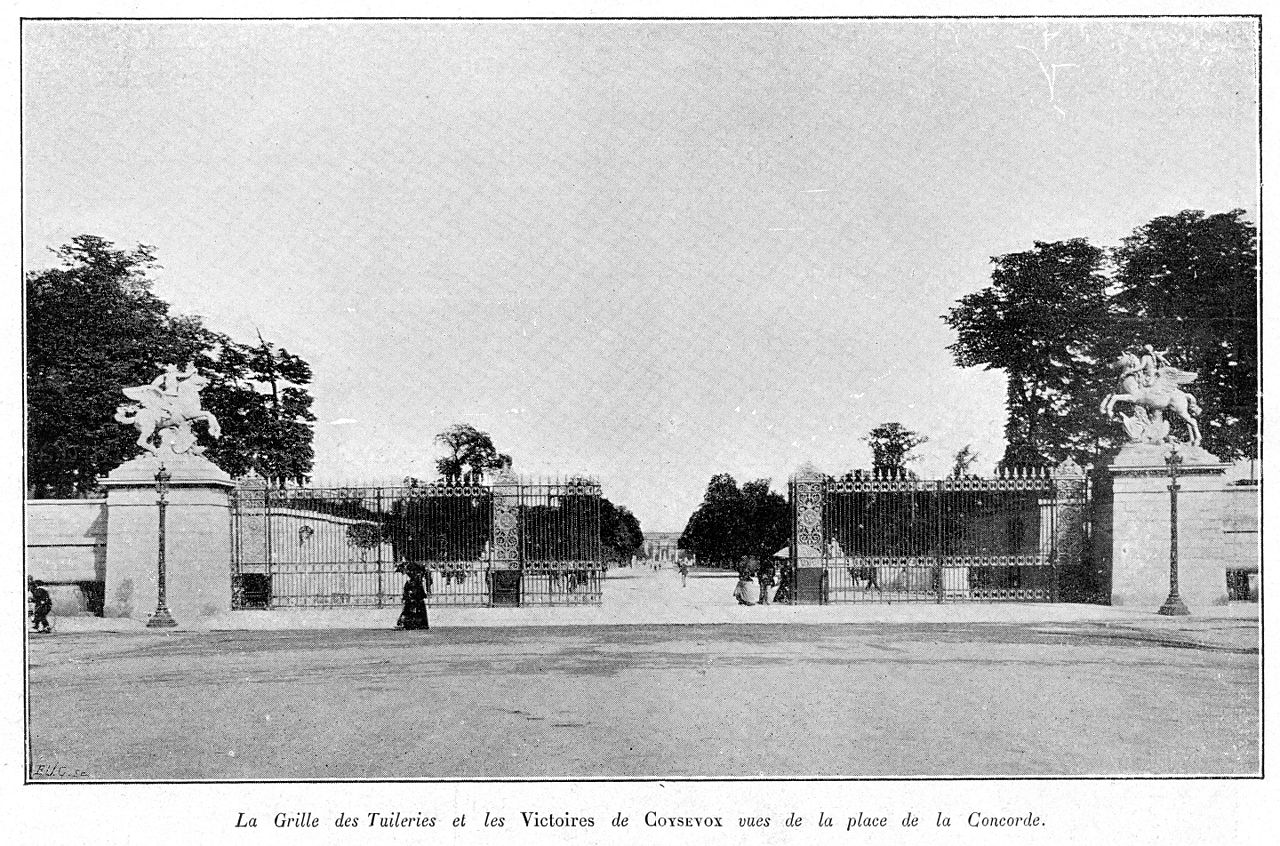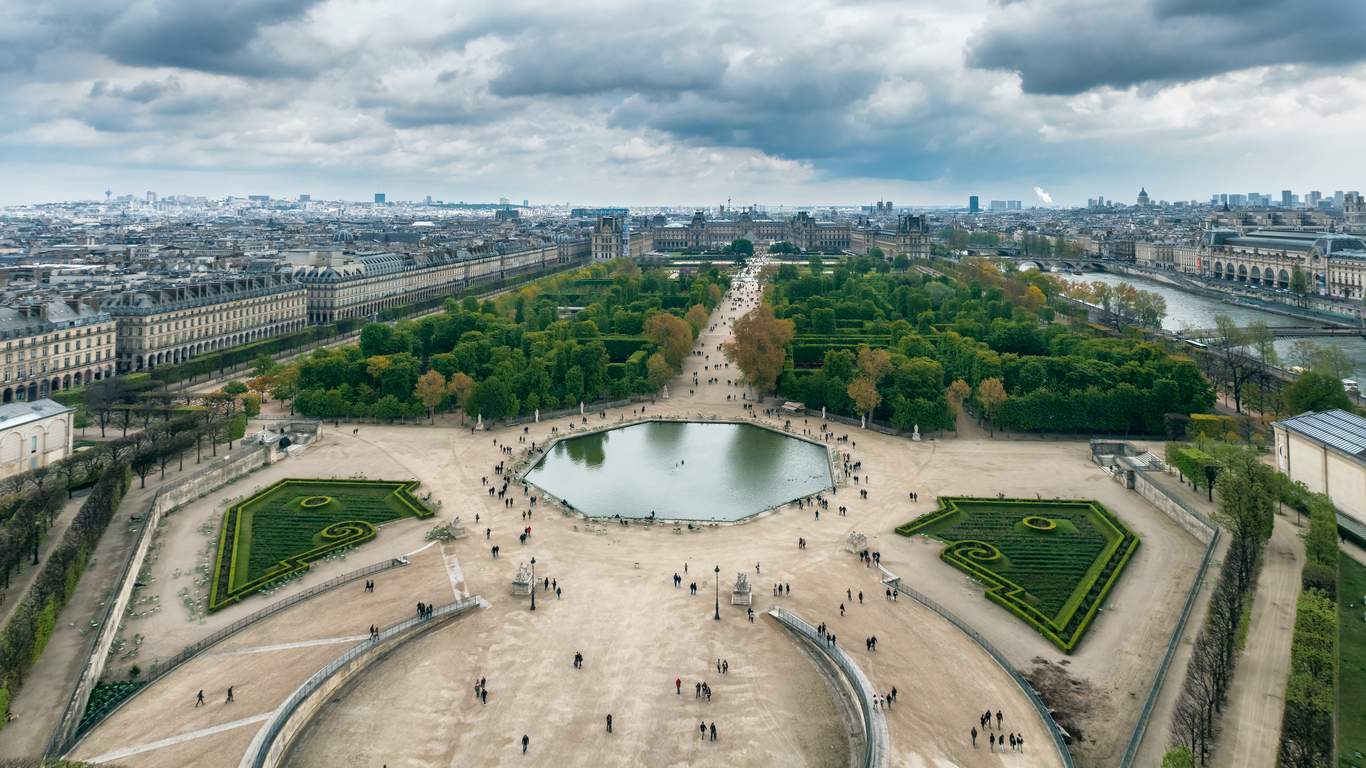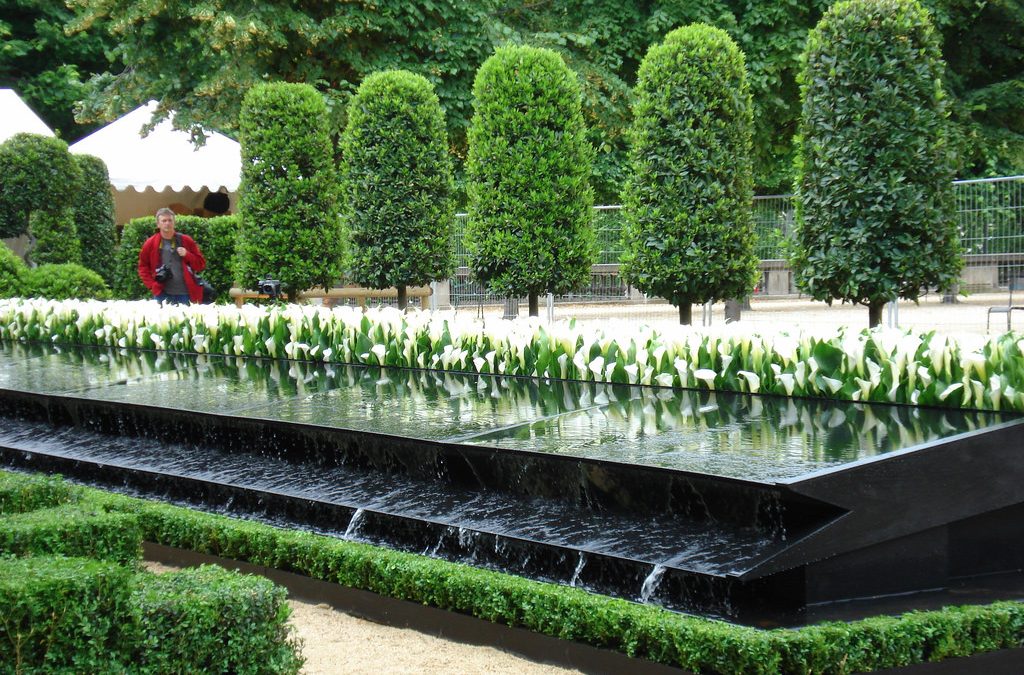
Tuileries Garden (Jardin des Tuileries)
Enter from the Louvre Side
On the Louvre side of the garden, the Louvre and its pyramid will dominate the horizon. However, just think, a palace once stood that would have blocked your view – the Tuileries Palace. Originally built in 1564 under the direction of Catherine de Medici, the palace stood on the site of old tile kilns. In French, these places for making tiles were called, tuileries. Hence the name, Tuileries Palace and Tuileries Garden. The Louvre is gargantuan today, but imagine with another entire wing enclosing a giant courtyard!!!
Okay, back to the garden. Although the gardens were created in the mid-1500s, royalty demanded a makeover after 100 years. Who could remake them? The most famous garden designer ever, of course! André LeNôtre, Louis XIV’s gardener, was commissioned in 1664 to redesign the gardens. Soon after, in 1667, the Tuileries Garden was the first royal garden to be opened to the public. Just for reference, in 1667 in North America, Charles II was King of England. That means he was the monarch of his subjects in the colonies in what would one day become the United States.
There is so much history, it is hard to focus on the gardens! The Tuileries are filled with trees, shrubs, lawns, basins, fountains and lots of crushed granite! You can walk up and get close to inspect nearly any plant in the garden. Beautiful and substantial ironwork fences line the street sides of the garden. But, there are so many entrances, the fencing is purely decorative at this point.
Enter from the Place de la Concorde Side
Enter from the other side of the garden, and you will find a crêpe stand just between the Place de la Concorde and the entrance.
Find a bookstore to the left, appropriately named, Librairie du jardin des Tuileries, that specializes in garden books. Then, up the ramps for horses (now for pedestrians), you will find the Musée de l’Orangerie and the Jeu de Paume museums on either side.

Entrance from the Place de la Concorde side – not much changed since this photo was taken.
You will also see Antoine Coysevox’ famous equestrian statues carved in 1699. Replicas now stand in for the originals that are protected in the Louvre. Sometimes called the Marly statues, they are imminently famous and named the Marly statutes because they were moved from Louis XIV’s estate, Marly, to the Tuileries for decoration.
Huge and Enjoyable
Do not be fooled by looking at the garden on a map. The gardens cover a tremendous expanse. Walking across the garden will take you a while – from any direction.

It is expansive! Those are people walking around down there.
Take a break while crossing at one of the garden’s café’s. Under the trees, enjoy an expensive baguette sandwich and citron pressé – a lemonade that you make yourself from lemon juice. It is brought to you in a tall glass of ice, along with a bottle of sparkling water that you mix sugar from packets into the lemon juice to make lemonade just to your liking.
Along with hosting the annual Jardins, Jardin exposition, the garden brings out lots of children in the summer sailing wooden boats, joystick-ing motorized boats, all while sun worshipers get their vitamin D.
The Tuileries Garden is in the heart of Paris and will be a reference point for your visit. Take advantage of it at any time of year. Even in the dead of winter, it is marvelous to walk in the Tuileries and absorb the history and beauty of Paris.
Tuileries Garden (Jardin des Tuileries)
Nearest Métro: Multiple Métros provide access to the Tuileries Garden. Tuileries and Concorde on the Tuileries side of the Seine; On the opposite bank of the river, but still close, look for the stations of Assemblée National and Musée d’Orsay.
Arrondissement: 1st
Admission: Free to access the garden.
Official website: https://www.louvre.fr/en/departments/tuileries-and-carrousel-gardens


